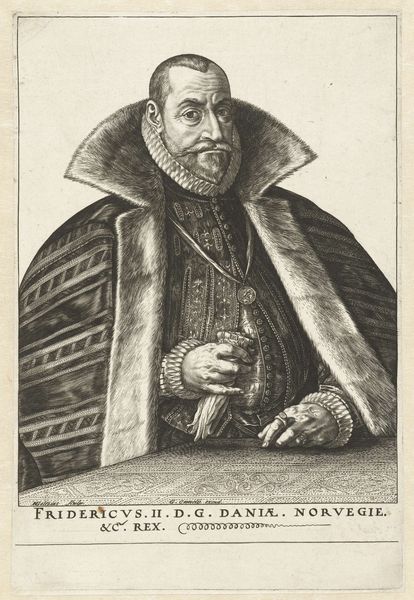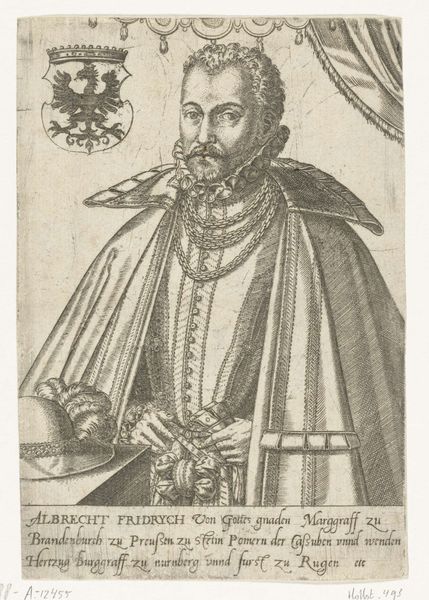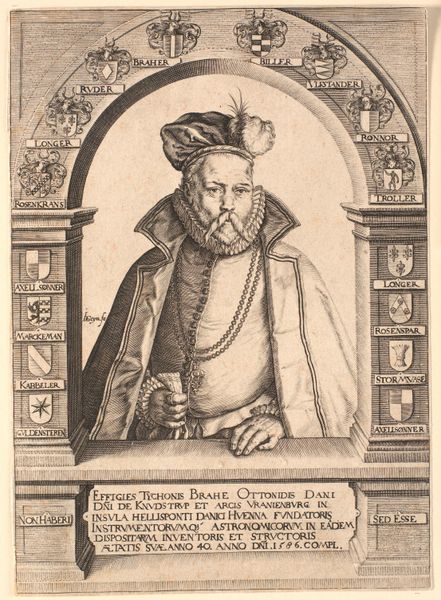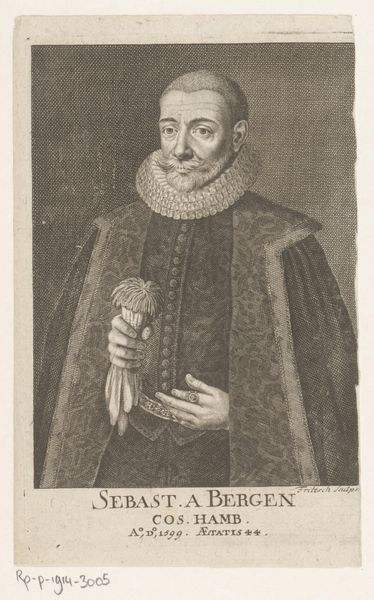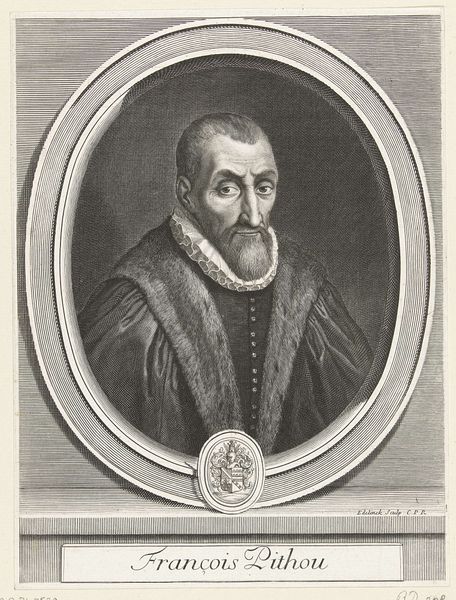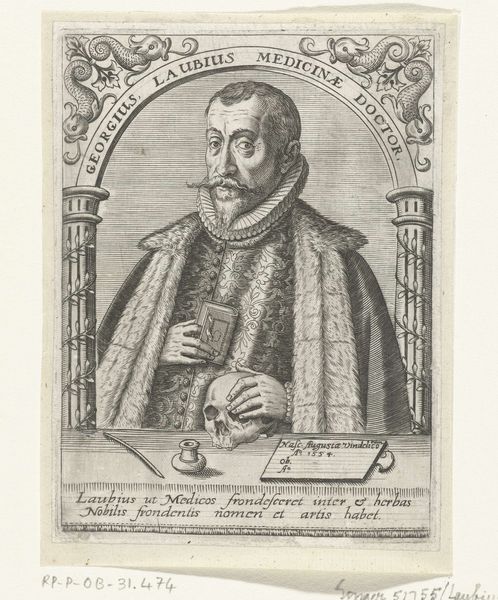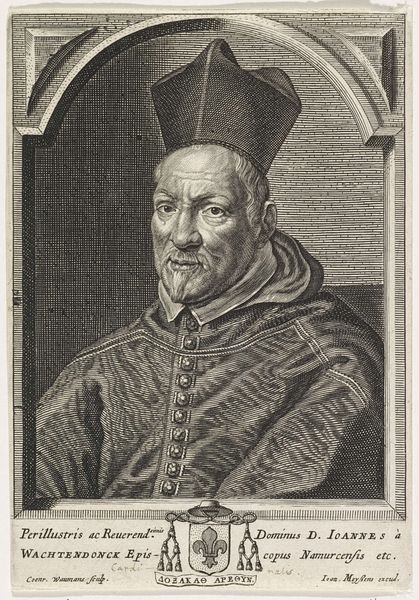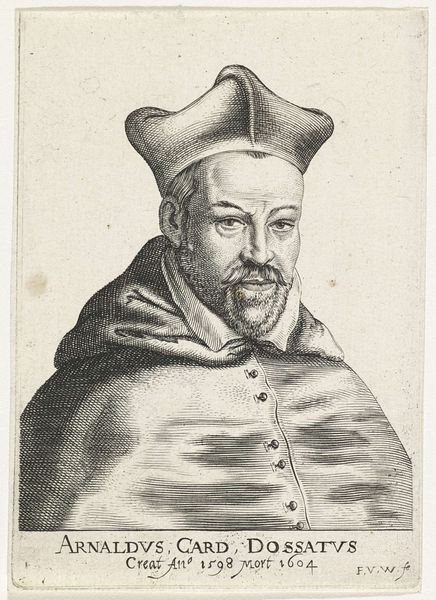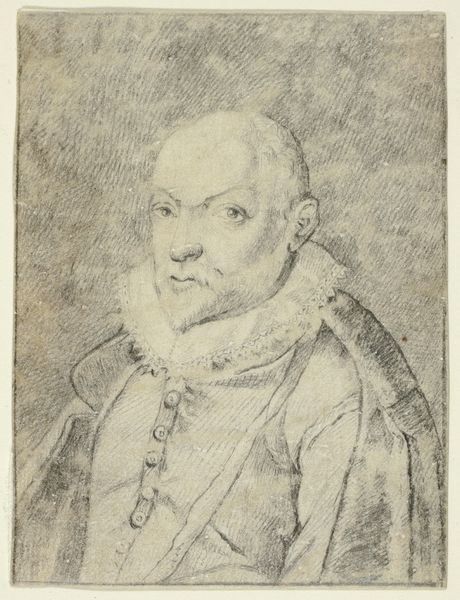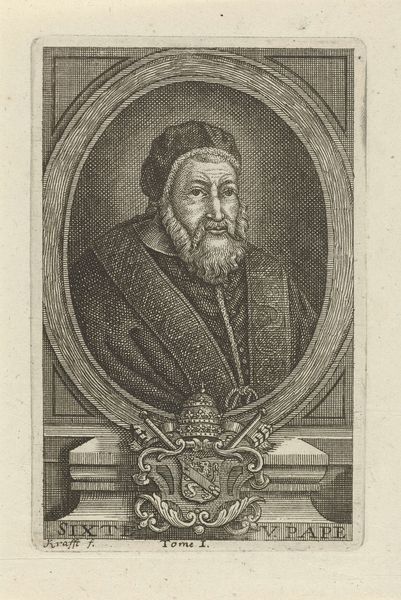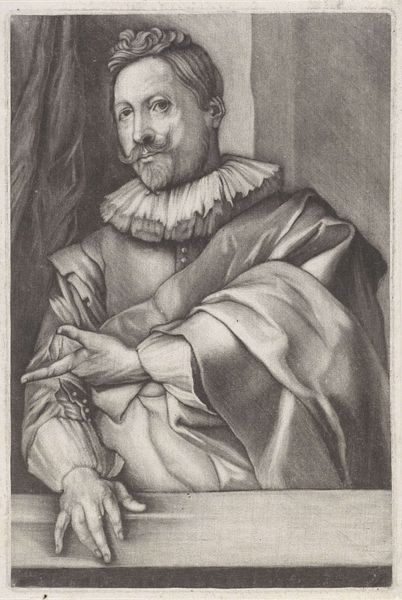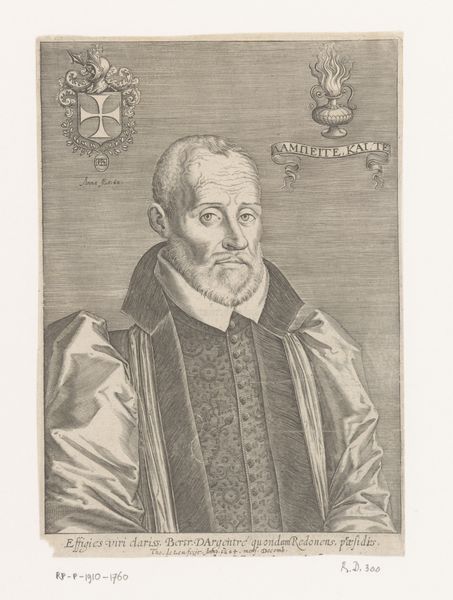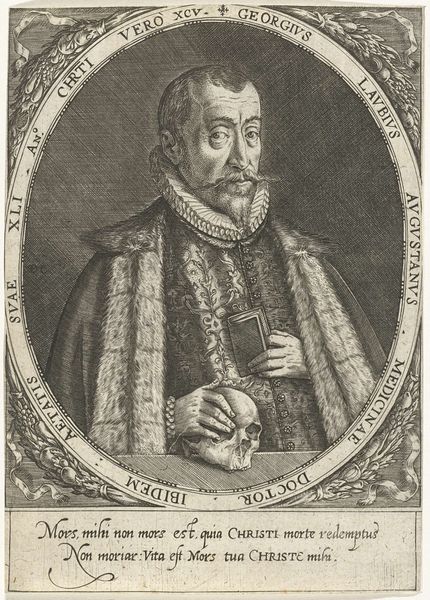
print, engraving
#
portrait
# print
#
old engraving style
#
mannerism
#
portrait drawing
#
history-painting
#
engraving
Dimensions: 215 mm (height) x 153 mm (width) (bladmaal)
Curator: Good morning. We're looking at Hendrick Goltzius' engraving, "Frederik II, King of Denmark and Norway," created between 1586 and 1589. Editor: My first thought is: texture. Look at the rendering of the fur collar, those meticulously etched lines trying to capture depth, warmth, luxury. It almost invites a tactile experience despite being a print. Curator: Absolutely, the materiality is striking. Goltzius was a master engraver, elevating the print medium. Think about the labor involved: each line meticulously carved into the copper plate. This wasn't just replication; it was a display of artisanal skill. The consumption of these images was also a signifier of status, making royal imagery accessible beyond painted portraits. Editor: And consider how portraits like this served as propaganda. Frederik II, a powerful figure, consciously shaping his image. The fur, the jewelry, it all screams wealth and power, projecting an image of strength to his kingdom and potential rivals. It also tells us about the social role of the monarchy at this time. Curator: Right. The print’s distribution mattered just as much as its creation. Goltzius ran a successful workshop, catering to a growing market for these images. This allowed for wider dissemination and created new opportunities for artists to profit off of royal portraiture, challenging earlier, restrictive patronage systems. Editor: Notice the specific details as well. He seems to hold gloves and he is wearing two rings. How are these choices related to the history, for example of the monarchy and its fashion at that time. It serves both a commemorative function but also showcases cultural values and beliefs about social status at the time. Curator: Exactly, and even that we have this engraving held today within the Statens Museum for Kunst adds another layer to its history. These institutions and museums played such a pivotal role in dictating its enduring relevance. It emphasizes art history and how art affects society today. Editor: Thinking about all these materials, combined with his iconic image and social meaning gives a modern sense for its historic perspective today. Curator: Yes, reflecting on these factors adds so much to appreciating not only the artistic achievement but the rich interplay of materials, meaning, and power inherent within it.
Comments
No comments
Be the first to comment and join the conversation on the ultimate creative platform.
